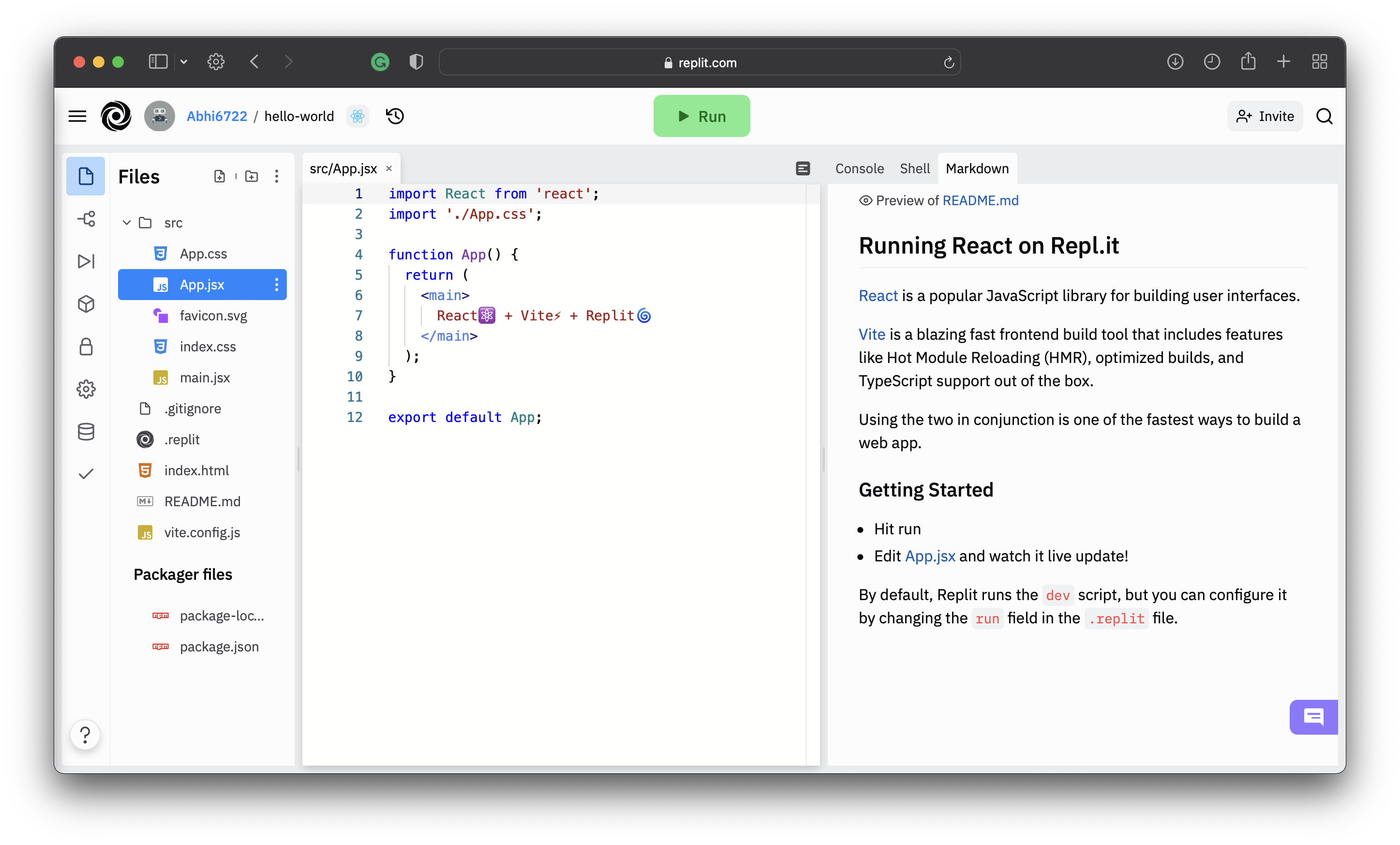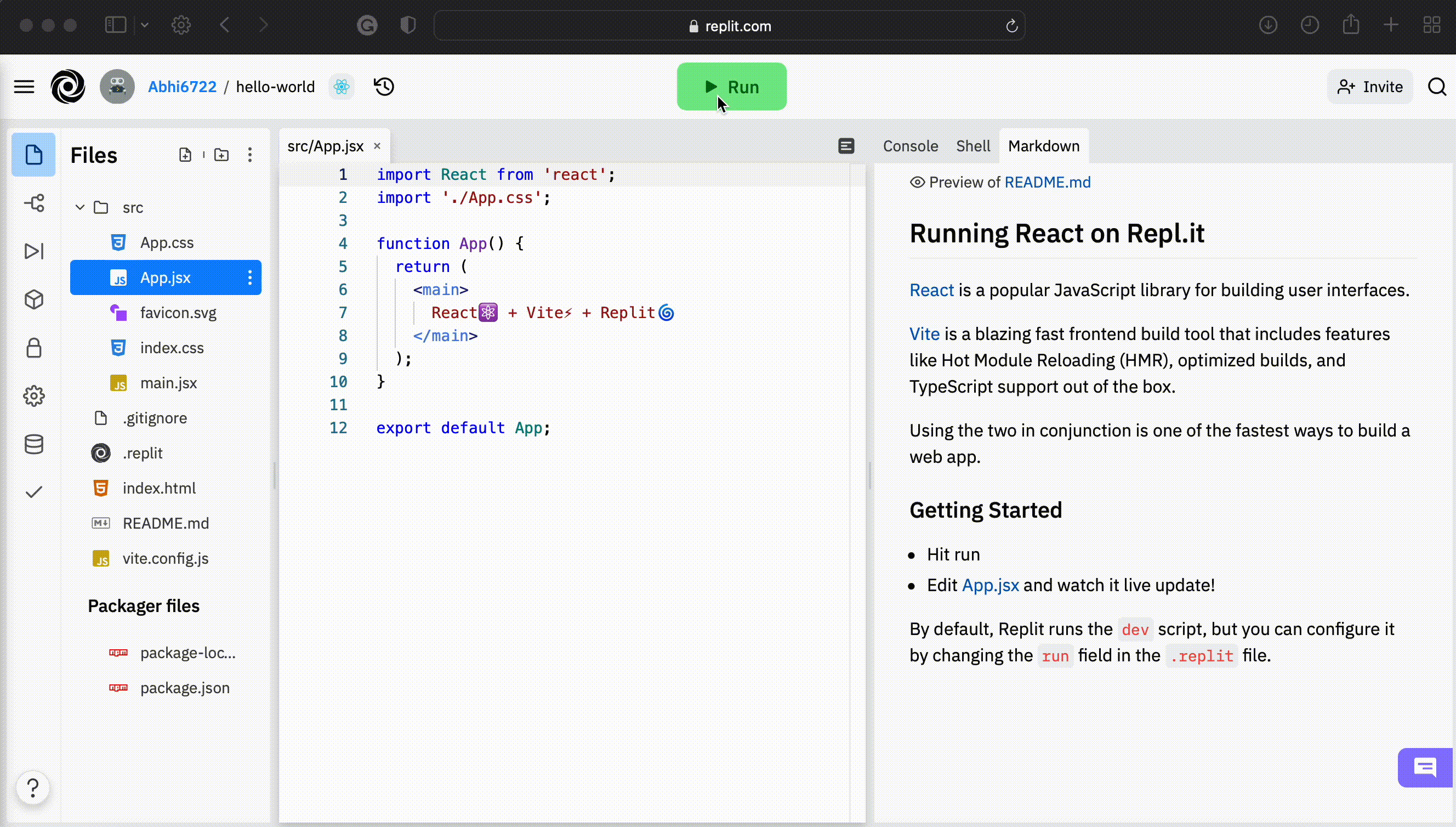Hello World
Well if you are going to learn any language then starting from Hello World is must 😂.
So Let's start with it.
In order for us to be on same page we are going to use online editor for our maximum task.
- Head over to replit.
- Create your account
- Click on create Repl
- In the template section choose
React.Js - Name it
hello-worldand click on create repl button.
You will see a similar image.

- Now Just click on the Run Button.
- You will see that the react application will be up and running.
- Now You just have to edit the content
React⚛️ + Vite⚡ + Replit🌀toHello World!and you can see Hello world! on the screen.

In your local editor
To set up create-react-app, run the following code in your terminal, one directory up from where you want the project to live.
npx create-react-app react-tutorial
Once that finishes installing, move to the newly created directory and start the project.
cd react-tutorial && npm start
Once you run this command, a new window will popup at localhost:3000 with your new React app.
Note
If you face any issue during this step then just follow the below instructions.
- create a
.envat the root of the folder react folder - type
SKIP_PREFLIGHT_CHECK=trueinside of .env file - now run in cmd
npm start.
If you look into the project structure, you'll see a /public and /src directory, along with the regular node_modules, .gitignore, README.md, and package.json.
In /public, our important file is index.html, which is very similar to the static index.html file we made earlier - just a root div. This time, no libraries or scripts are being loaded in. The /src directory will contain all our React code.
To see how the environment automatically compiles and updates your React code, find the line that looks like this in /src/App.js:
To get started, edit `src/App.js` and save to reload.
And replace it with any other text. Once you save the file, you'll notice localhost:3000 compiles and refreshes with the new data.
Go ahead and delete all the files out of the /src directory, and we'll create our own boilerplate file without any bloat. We'll just keep index.css and index.js.
For index.css, I just copy-and-pasted the contents of Primitive CSS into the file. If you want, you can use Bootstrap or whatever CSS framework you want, or nothing at all. I just find it easier to work with.
Now in index.js, we're importing React, ReactDOM, and the CSS file.
import React from 'react'
import ReactDOM from 'react-dom'
import './index.css'
Let's create our App component again. Before, we just had an <h1>, but now I'm adding in a div element with a class as well. You'll notice that we use className instead of class. This is our first hint that the code being written here is JavaScript, and not actually HTML.
class App extends React.Component {
render() {
return (
<div className="App">
<h1>Hello, React!</h1>
</div>
)
}
}
Finally, we'll render the App to the root as before.
ReactDOM.render(<App />, document.getElementById('root'))
Here's our full index.js. This time, we're loading the Component as a property of React, so we no longer need to extend React.Component.
import React, {Component} from 'react'
import ReactDOM from 'react-dom'
import './index.css'
class App extends Component {
render() {
return (
<div className="App">
<h1>Hello, React!</h1>
</div>
)
}
}
ReactDOM.render(<App />, document.getElementById('root'))
If you go back to localhost:3000, you'll see "Hello, React!" just like before. We have the beginnings of a React app now.